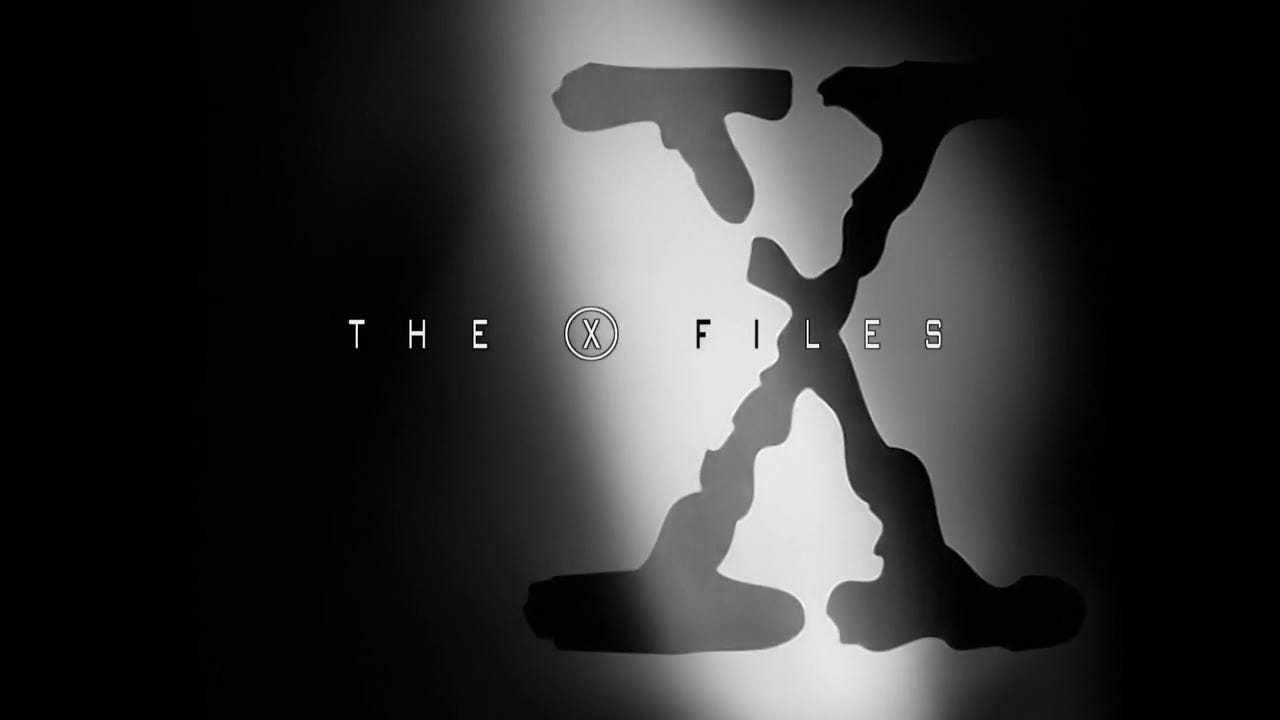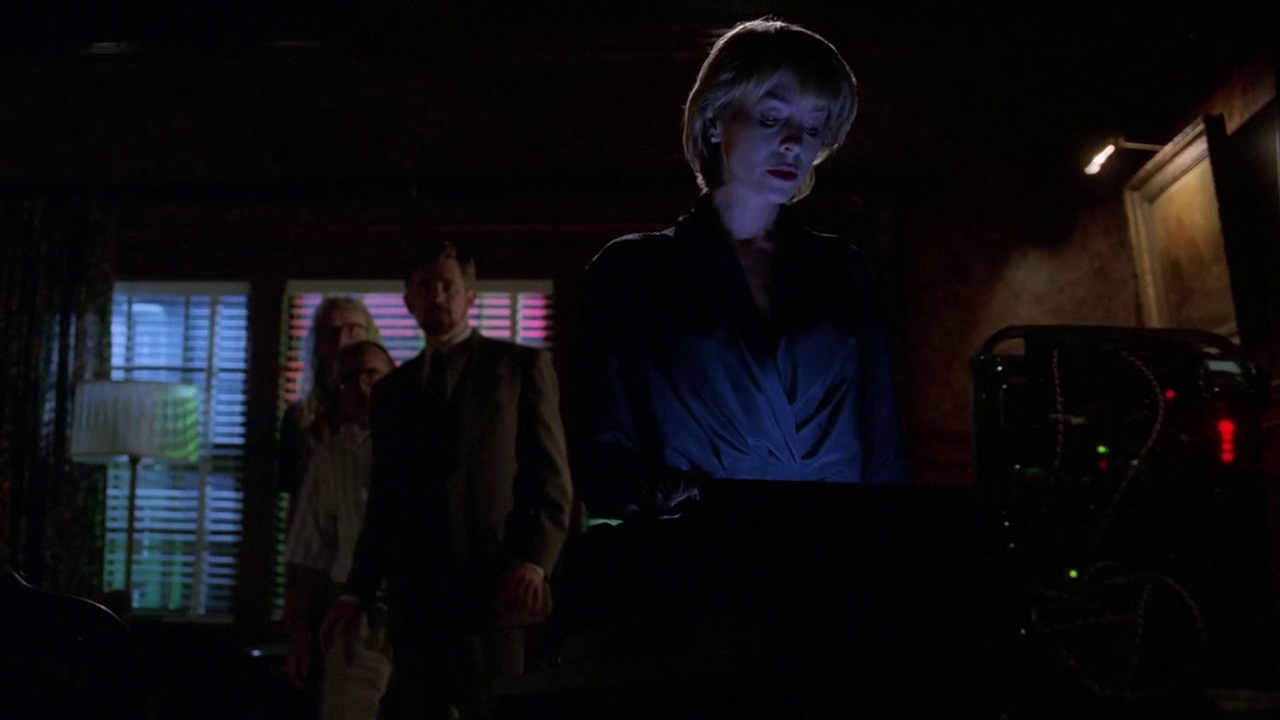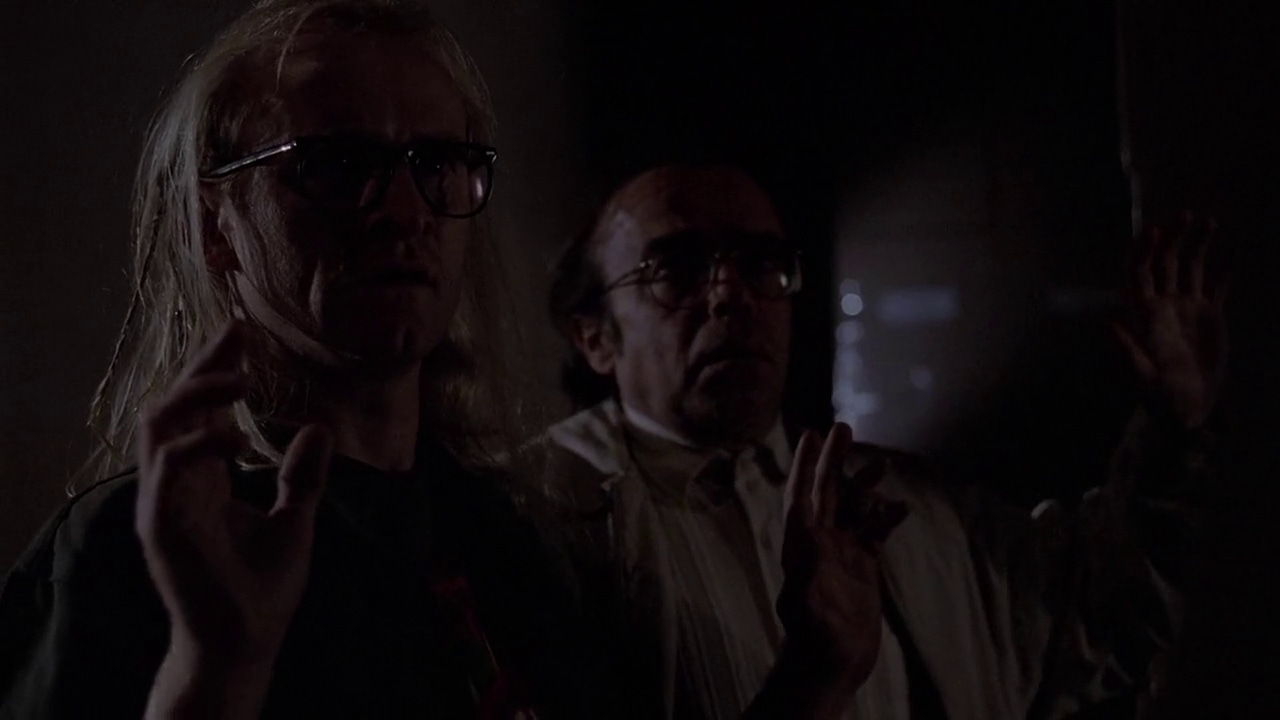TV Unspooled: The X-Files, “Unusual Suspects”
In which I attempt to launch a new running feature…

What is television? If you asked this question at any point in the second half of the twentieth century, the answer would be fairly obvious: it’s a machine, the square-ish box that sits in your living room. Maybe someone fancy would claim it’s a communications technology. But when we talk about television now, we generally mean it as a medium. Increasingly, the medium itself feels like it’s breaking.
Remember the old days? If there was a show you liked, you would turn the TV on at the time it was scheduled. You would watch it. You would have to wait until next week for another episode. If you were busy, or you forgot, you missed it. It might not be gone forever, but you’d have to hope there would be a repeat some time. You were at the broadcaster’s behest. What this meant is that, chances are, you didn’t get to watch every single episode of a show you liked in order from start to finish. The last episode of Friends set numerous ratings records for the series. How many of the millions of people who watched it had seen every episode from season one in order without missing any? One would have to imagine very few.
That’s all supposed to have changed now. The magic of modern streaming services is that we apparently control our own fate. Want to start watching Friends? Just head on over to Netflix (until they lose the rights) and start watching, season one episode one, The One Where Monica Gets a Roommate. From there you can watch the whole series in chronological order. Ross and Rachel taking a break? Monica and Chandler starting a secret affair? It’s all here! You can watch the whole thing without missing a moment, as it was intended.
But was it really intended for this? The Friends writers were telling stories under the assumption that new people would be tuning in every week, and were under pressure to cater to those people, making sure everything was accessible. They also knew that even for the die hard fans, this half-hour was all the Friends they were getting all week. It was supposed to keep them satisfied for seven days, not as part of a seven hour binge. No matter what Netflix believes, TV was made to be ephemeral.
So here’s what I’m trying to do: jump in with an episode in the middle of a show’s run, as though I were just tuning in for the first time and this is what I saw. This will hopefully be a fairly regular feature in the newsletter (along with my current mode of just writing about whatever I think that week) where I jump in with a new show each time. Hopefully we’ll be able to find whatever it is that has disappeared since the binge watch took hold.
***
This week’s episode? The X-Files, season 5 episode 3, “Unusual Suspects”.
***
In truth, this first entry is almost a cheat, as I had seen the first three or so episodes of The X-Files already. Having seen the pilot, it included the relevant-to-this-installment information that Fox Mulder had been covering paranormal cases before the series began, unlike Dana Scully (who doesn’t even appear here). But those early entries are known for being cases of the series still finding its feet, still discovering what it wanted to be. “Unusual Suspects”, I’m told, is a real episode of The X-Files, when the show knew exactly the kinds of stories it should be telling. As for this specific story, it’s something of a formal break for the show, delving into the past to give an origin story for recurring characters The Lone Gunmen.
This allows the episode to function on two levels. For long time fans, it’s a chance to expand what they know about an important piece of the show’s world, to better understand who these supporting players are and what drives them. For newer viewers, it’s a relatively standalone story about a man named John Fitzgerald Byers getting drawn into a world of government conspiracies and paranoia. It’s a neat trick, and even if it has trouble threading the needle in a few places, it’s one that mostly worked from my side.
The way Byers becomes involved with this world is through a woman named Susanne Modeski, and this might be the episode’s biggest problem. For those already familiar with the series, this one off character surely felt of lesser interest compared to understanding more about the Lone Gunmen and Mulder. From my perspective, though, she felt like the most interesting person in this story, and it’s a shame she’s so poorly served. While central to almost every plot point in this episode, Modeski has shockingly little agency. Her backstory, as she tells it to us, is mostly about others doing things to her, forcing her into a position of being a fugitive. She does make a fairly critical choice early in the hour, to involve Byers in events, but from there onwards he completely takes over the narrative. The story becomes about Byers and co discovering this world of government lies, with Modeski functioning largely as a prop to the story. This is fine if you’re a regular viewer and your interest is in the characters you know and love, but it grates somewhat when experienced as a standalone story.
Not only does Modeski lack agency, but her character plays into a lot of fairly questionable femme fatale cliches. It’s understandable that the episode drifted into this territory considering the fun it has embracing film noir tropes, but it grates nonetheless. The show almost seems to view her as seductively using her sexuality to lure poor, helpless Byers into a life of mystery for her own ends. She immediately lies to him about everything, and the episode goes so far as to have an FBI report label her “unstable and delusional”. That she is ultimately proven right over her suspicions of the US government does help make her character more sympathetic, but the episode isn’t exactly critiquing these long existing sexist tropes.
For a show famed much more for its characters and mysteries, what impressed me the most here was the direction. If you watch a lot of prestige TV in 2019, you will undoubtedly be familiar with the issue of poorly lit scenes, covered in darkness to the point where no one can see anything on screen. “Unusual Suspects” certainly has a lot of scenes shrouded in darkness. What it does much better than many current shows, though, is to use its light sources well enough to emphasise what the audience needs to see while hiding that which can remain hidden. Below are a couple of examples of this. It does look as though The X-Files had a major advantage over most modern shows in this regard in that it was shot on film rather than digitally. Digital has its strengths and weaknesses, and I’m far from an expert, but it certainly seems to struggle at showing a partially lit, partially darkened image. “Unusual Suspects” is able to live in that world and thrive at it, thanks to the shooting format and really good choices from director Kim Manners.


While I was certainly aware of this aspect of the show before watching, I hadn’t quite anticipated how much this episode would hit on a vibe of conspiracy theories and paranoia. It achieves this quite well, and Vince Gilligan’s script does a nice job of slowly building to the more impactful revelations, though it’s impossible to separate it from a modern context. “Unusual Suspects” aired in 1997, the same year as Men in Black, and it definitely plays into the kind of “end of history” genre that I understand X-Files spent a lot of time in. As it is, we live in an era where conspiracy theories have been totally appropriated by the far right, and a government paid dentist hiding a location tracker in someone’s tooth feels like something Alex Jones would promote to justify abusing oppressed minority groups. I certainly wouldn’t call this a criticism, as part of the value of watching past art is seeing a window into the era it was made in, but it’s definitely a creative tone that couldn’t be worked in today.
This all sounds a little harsh, as I ultimately was impressed by this episode. Its flaws, as real as they are, serve as a window into the show’s creative choices in that moment as much as its strengths. Especially in the case of a cultural phenomenon like X-Files, its choices speak so specifically to a cultural moment in the 90s. The episode is dated in some ways, yes, but it’s a pleasant dating, and certainly something I’d happily watch more instalments of.
Next time: Seinfeld, “The Marine Biologist”.



